

Mr. G's Page
Mr. Golden teaches Math, Technology, and Japanese.
Mr. Golden graduated from The University of New Hampshire with a Bachelor's
of Science degree in Interdisciplinary Mathematics with a Computer Science
option in 1988.
In 1989 and 1990 he was a Peace Corps volunteer in Kenya teaching
Math and English.
He also taught Math at St. George's
School in Spokane, Washington after returning from the Peace Corps.
The image at the left is a student's hiragana brush writing for the characters
a, i, u, ka and ki from Japanese class.
Math
The math program at the Stevens School mixes old-style math skills and
drills with new concepts and applications. The textbook we use, Glencoe's
Pre-Algebra: An Integrated Transition to Algebra and Geometry, receives
high grades from mathematicians and scientists and serves as the text for
seventh and eighth grade. We strive for depth and thoroughness in our program.
All students are required to participate in discussions and board work.
Students are encouraged to discuss solutions and are expected to be able
to explain their work in detail.
Below is a seventh grade student's paper about the one time pad cryptosystem.
One Time Pad
What is a One-Time Pad? A One -Time Pad is a cryptosystem. It is a very
simple system and if it is used correctly it can be an unbreakable system
as well. In order to use this One Time- Pad you need to have 2 exact and
precise copies of the pad. The pad will be the same length as the message
you wish to encode. The one thing you have to keep in mind is that the more
copies you make of the pad the more likely it is to be pirated and when that
happens your whole system is completely dysfunctional and destroyed.
The One-Time Pad can certainly be unbreakable as long as the data you
use is secure, safe, and random. The pad is also used in sets. Each user
keeps a copy of the pad but, right when the message is encoded with the pad,
the pad must be terminated. You never want to reuse the One -Time Pad because
you end up decreasing the safety and stability of the pad. As long as the
pads are the same and are never reused, your code won't be broken.
If someone comes across your message, all they will see is a bunch of
letters and since they don't know your pad, they cannot find out your plain
text, which is your original message. That is why it is dangerous to have
too many copies of the pad because the more pads there are the more people
can get their hands on them. With today's' recent technology, if someone
gets a hold of your pad, computers can take the cipher text and your pad
and find out what your message is within a short amount of time. Not only
will your system be totally exterminated, you will too, so do yourself a
favor and try to keep the pad in security.
Povray in Action: 3D Visualization and Mental Gymnastics
Povray is a three dimensional ray tracing program that allows students to
set up objects and light sources and change the viewer's position and viewing
angle. Click on an image to enter the student's three dimensional world.
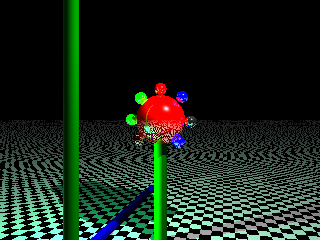
CB's World
Tesselations and Fractals
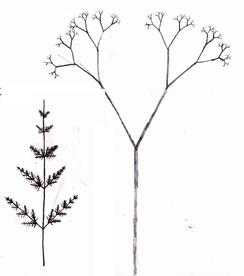
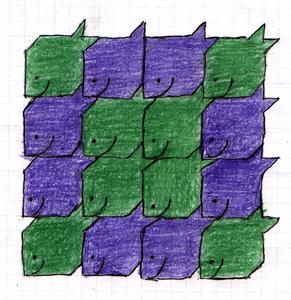
In 2000 we worked on tesselations and fractals in association with our
entry into the Symmetry Poster Contest sponsored by the UVM Math Department.
These are some examples of tesselated fishies, a fractal fern, and branching
bronchi (or broccoli).
2004 Sixth Grade Presidential Survey
Our sixth grade took a presidential preference survey of students and
parents in February about who they liked and disliked. See the results below.
Click on a chart to enlarge it.
Which chart do you like best? Do you think the 3D effects are cool? Which
chart conveys the information most clearly? What questions do you have about
these charts or how the survey was conducted?
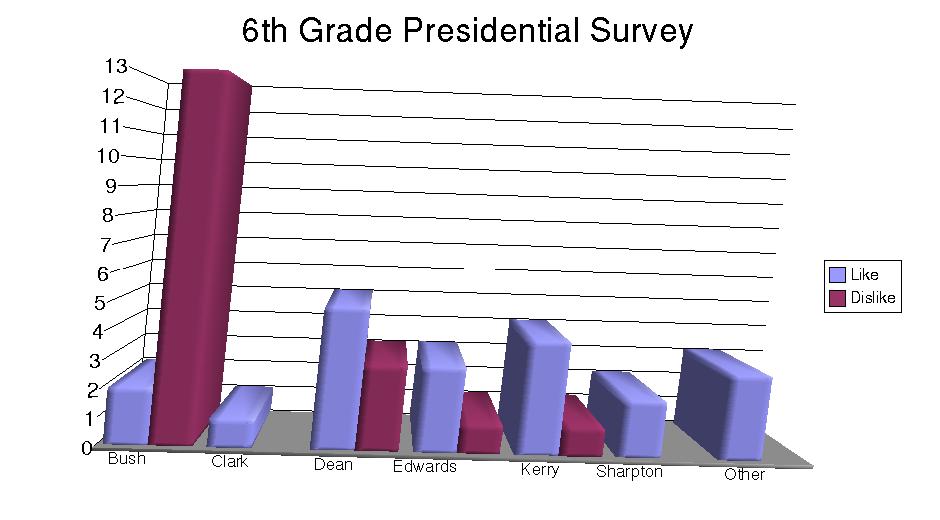

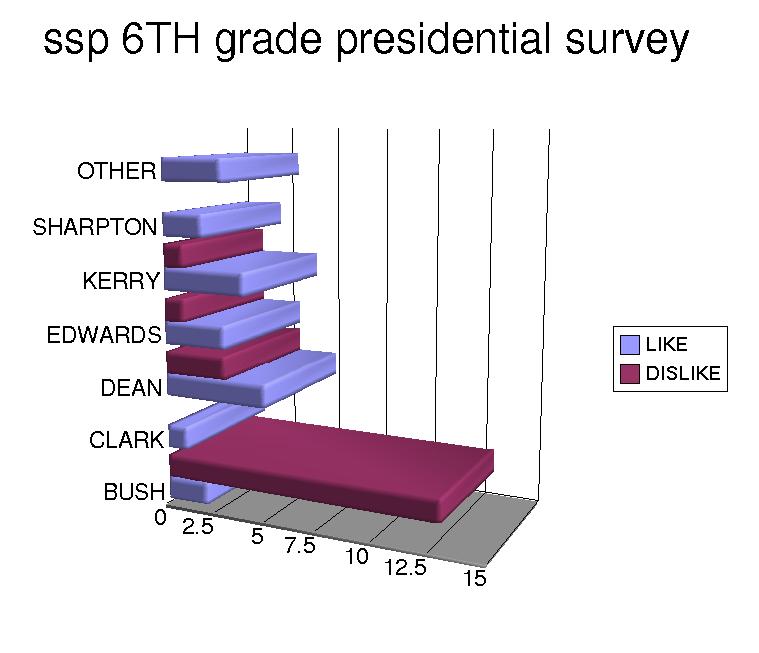
Mr. G's 20 sided house: The Icosagon
Click below to see pictures of Mr. G's 20 sided house under construction.
icosagon1 icosagon2
icosagon3 icosagon4
icosagon5 icosagon6
icosagon7









